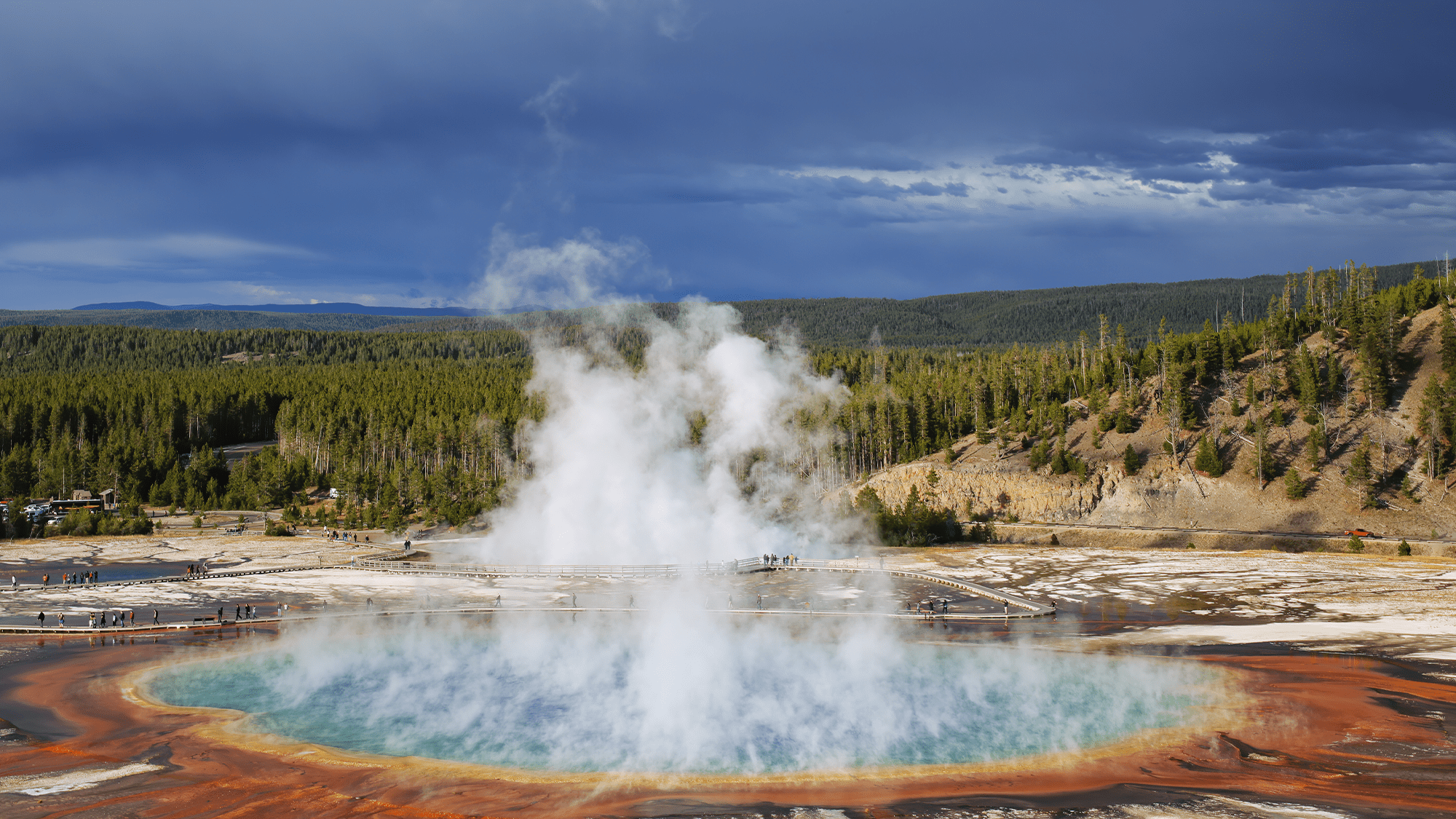

While any season is a good time to visit some national parks, tourist visits really peak in the summer. Even as extreme temperatures smashed records in Death Valley National Park in California, visitors still trekked out to one of Earth’s hottest locales. Heat related illnesses in Grand Canyon National Park are also expected to rise due to climate change.
The majestic views and inspiring landscapes of “America’s best idea” can create lifelong memories and allow people to connect with the natural world in ways that they might otherwise not. However, they can also bring out some pretty bad behavior. Here’s how to act cool no matter how sweltering it gets on your next trip to a national park.
[Related: The 10 most underrated national parks in the US.]
All for the ‘gram
While the unofficial motto of the national parks is “take only memories and pictures, and leave only footprints,” that does not mean putting life and limb at risk for a photo. In June, a visitor to Yellowstone National Park seemingly ignored warnings and dipped her hand into one of the park’s famous hot springs. These springs can reach temperatures of up to 198 degrees Fahrenheit (the boiling point of water at Yellowstone’s average altitude) due to the area’s active geothermal activity. Don’t do this if you want to avoid burning your hand and disturbing the hot spring. And, if you don’t heed this warning, you could also end up on TouronsofYellowstone.
Another video taken at Yellowstone earlier this summer shows a tourist getting uncomfortably close to a bison. These animals are the largest land mammals in North America and can weigh up to 1,000 pounds. Park rangers urge all visitors to not disturb the wildlife and stay at least 25 yards away. Further east in Great Smoky Mountains National Park, tourists cornered a black bear with a selfie stick. While rare, the park’s black bears have attacked humans and disturbing them is illegal. So when it comes to America’s beloved fauna, admire from afar.
Leave the spray paint at home
National parks are no stranger to artistic endeavors—restricted caves in Joshua Tree National Park in Southern California house various ancient rock carvings and drawings called petroglyphs, for example. But it’s best to leave these drawings alone, and not contribute anymore. In February, a man from Minnesota who climbed into a 600-year-old restricted cave in Joshua Tree National Park in Southern California was fined $540 and banned from any national park for one year. Joshua Tree, known for spiky trees and dramatic rock formations, is unfortunately no stranger to this type of bad behavior. In 2019, the park battled vandalism during a government shutdown that was so bad that it may take the trees 300 years to fully recover.
[Related: How to avoid dying in national parks.]
The National Park Service is also investigating red graffiti at Maine’s Acadia National Park. This kind of vandalism could be dangerous if the red markings confuses hikers, as it could be mistaken for trail blazers. NPS advised hikers to follow blue trail blazes instead. Spray paint has also been spotted on the rocks along Laurel Falls Trail in Great Smoky Mountains National Park. For safety and preservation purposes, save the nature-inspired art for when you get out of the park.
Keep your hands (and tongue) to yourself
Towards the end of last year, NPS officials had to warn visitors to stop licking the Sonoran desert toad. Also known as the Colorado river toad,this roughly seven inch-long amphibian secretes a potent toxin that can make people sick if it makes contact with the skin or gets in the mouth. Some have discovered that these toxic secretions contain 5-MeO-DMT, a powerful hallucinogenic. The US Drug Enforcement Administration considers it a Schedule 1 drug, which means it is not currently accepted for medical use and has a high potential for abuse. So, if you’re tempted to give this frog prince a kiss for whatever reason, please just don’t.
In May, a man pleaded guilty to one count of feeding, touching, teasing, frightening, or intentionally disturbing wildlife at Yellowstone. Even though his actions weren’t proven to be malicious, the newborn bison calf was unable to find its herd. This left the poor creature to wander the roadways causing hazards, and the calf was eventually euthanized. He was charged a $500 fine, a $500 Community Service payment to Yellowstone Forever Wildlife Protection Fund, a $30 special assessment, and a $10 processing fee.
Again, if you love wildlife, it’s best for you and fellow visitors to keep their hands to themselves. The NPS urges all visitors to be mindful of trails and wildlife, take out any trash brought into the parks and heed park rangers’ warnings.
